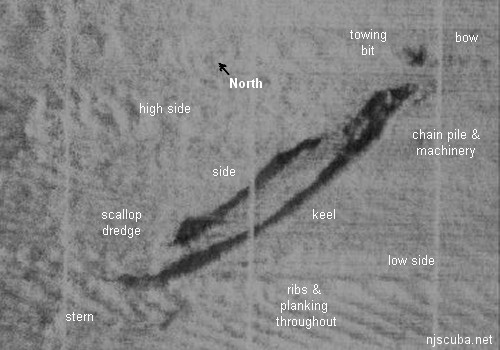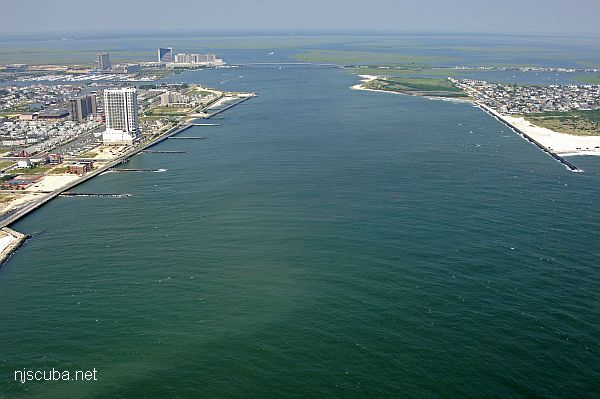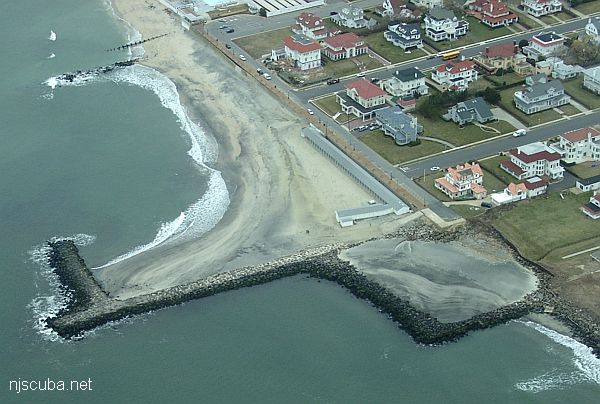New Jersey Dive Sites (1/31)
More: New Jersey Dive Sites ...
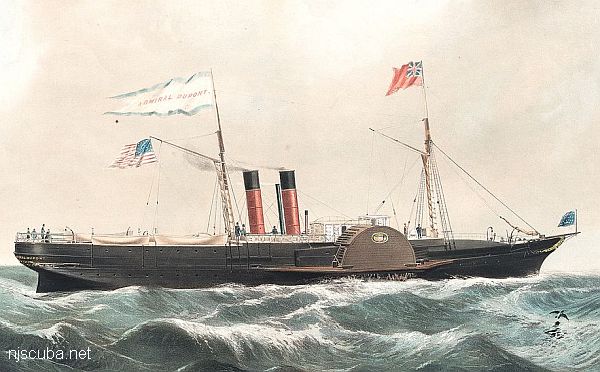
- Type:
- shipwreck, steamer, USA
- Built:
- 1847, England, as Anglia
- Specs:
- ( 195 x 28 ft ) 750 gross tons, 50 passengers & crew
- Sunk:
- Thursday June 8, 1865
collision with ship Stadacona - 17 casualties - Depth:
- 150 ft
More: Admiral DuPont ...
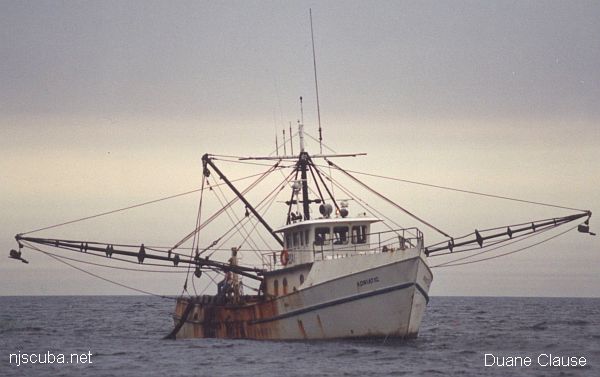
"This picture was taken several years ago by my wife, Debbie. We were searching for the Adriatic's lost clam dredge that day. Later, after the sinking, my group of divers was the first to dive on and identify her. I used this picture at the dive site to set the dive plan and objectives."
- Capt. Duane Clause, Porthole II
- Type:
- shipwreck, clam dredge, USA
- Built:
- 1977, Master Marine, Bayou La Bâtre AL USA
- Specs:
- ( 74 ft ) 134 gross tons, 4 crew
- Sunk:
- Monday January 18, 1999
foundered in rough seas - no survivors - Depth:
- 65 ft
More: Adriatic ...
- Type:
- shipwreck, barge
- Built:
- 1877
- Specs:
- ( 180 ft ) 2154 tons
- Sunk:
- 1930s, no casualties
- Depth:
- 40 ft
The Alex Gibson shipwreck is the remains of a wooden barge. The barge was built in 1877 was 180 ft long and displaced 2154 tons. She was sunk in the 1930s and now sits in 40 ft of water on a clean sand bottom.
More: Alex Gibson ...
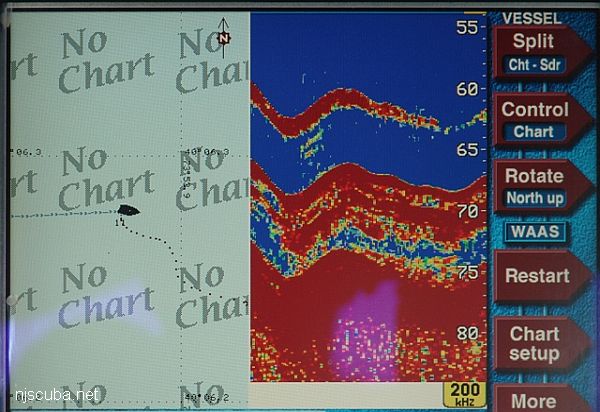
- Type:
- shipwreck, scallop dredge, USA
- Built:
- 1968, St Augustine FL USA
- Specs:
- ( 64x20 ft ) 48 tons
4 crew - Sunk:
- Thursday June 29, 2006
collision in fog - 2 casualties - Depth:
- 75 ft
More: Alex Mac ...
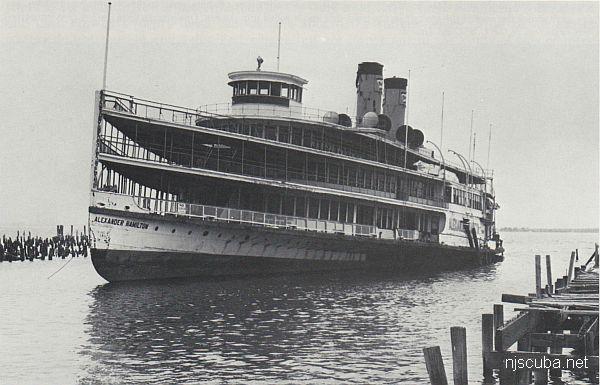
The Alexander Hamilton was the last of the steam-powered side-wheel riverboats of the Hudson River Day Line. Built in 1924, she ceased operations in 1971. A well-meaning group pulled the Hamilton from the mud in 1977 and moved her to a temporary berth along the east side of the Navy pier, planning to restore her as a museum. Unfortunately, at the new more-exposed location, the old vessel was sunk and reduced to scrap by a sudden storm in November of that year. The last records indicate that the wreck is still there, and you can even make out the outline on Google Earth.
More: Alexander Hamilton ...

